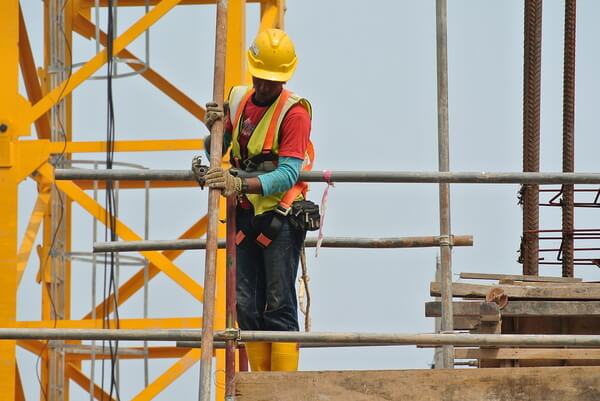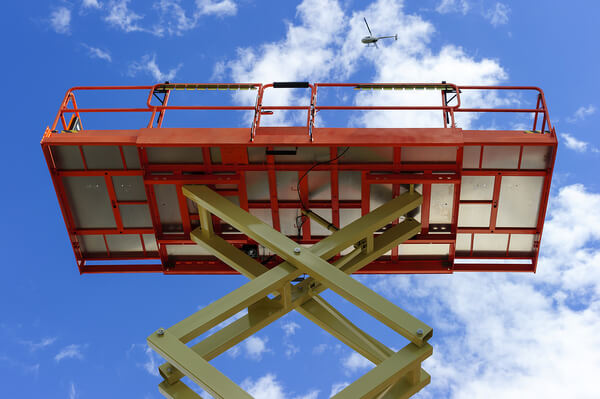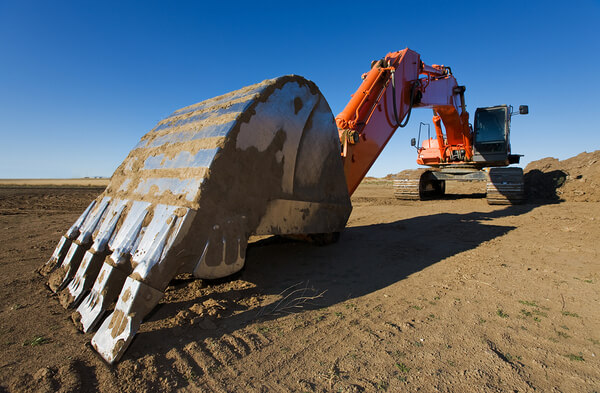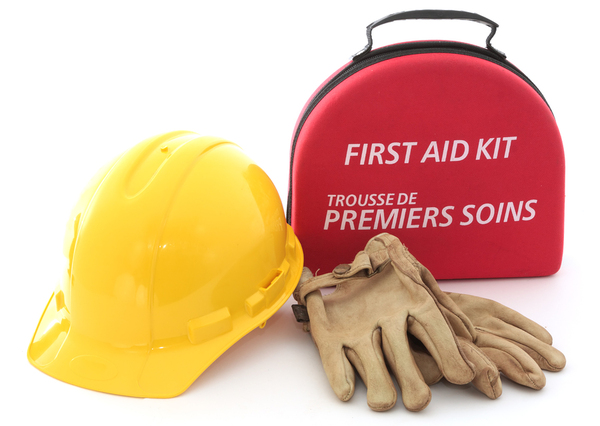
Safety is tantamount on any job site, and the Occupational Safety and Health Administration, or OSHA, exists to ensure everyone gets the job done smartly and safely. That said, though, companies that have little experience dealing with OSHA can find its fine structure and its regulations nearly impenetrable. Here's what you need to know about OSHA violations and the fine process.
What Is OSHA?
OSHA is the enforcement arm for the United States Department of Labor. Any job site in America, whether you're renovating a house or building a skyscraper, falls under the jurisdiction of OSHA. Properly credentialed OSHA inspectors are allowed to enter and inspect your site for violations at their discretion.
That said, OSHA doesn't inspect all of the millions of job sites under its jurisdiction every year. Instead it has a set of priorities it follows that will trigger an inspection. The biggest is "imminent danger situations," problems that are immediately obvious and put the health and safety of employees and the public at risk. OSHA has the authority to shut down work on job sites with this problem immediately and keep them closed until the issue is addressed. Frankly, however, except in scenarios of gross incompetence or deliberate malice, you're unlikely to have an OSHA inspector arrive at your site for such a reason.
The second and third priorities are far more commonplace. When a employee is killed or forced into an inpatient hospitalization as the result of a workplace accident, fatalities must be reported to OSHA within eight hours and injuries within 24 hours. OSHA inspectors will likely be arriving soon after to assess the site for violations. The third most common is employee complaints filed with the administration, which will also be followed up on quickly.
It's common to view OSHA as "the enemy" and its rules as an annoyance, but the truth is that OSHA is there to ensure everybody's safety on the job site. It doesn't want to send inspectors; it'd much rather have complete workplace safety. Knowing and complying with OSHA regulations is often both straightforward and simple, especially if you know the common violations.
The Most Common OSHA Violations

The most common OSHA violations should be forefront in your mind, not least because they're often simple to address on job sites.
Fall Protection: This is simple enough; you need to make sure your crew won't fall. Guard rails, safety nets, safety harnesses, and other fall protections should be commonplace. If you're in a situation where implementing a fall protection system would increase risk, however, before you begin work, you should contact OSHA and have an exception granted. Similarly, train any crew in proper workplace safety before they get on the site, especially if you can't implement safety systems.
Hazard Communication: In a word? Signs. This violation is most commonplace with dangerous chemicals, but there's no such thing as too many signs. Clearly mark all hazards with visible signage and make ensuring those signs are visible a part of the daily routine on your job site.
Scaffolding: OSHA specifies that any scaffolding needs to take at least four times the maximum weight you expect it to bear. Suspension ropes should take six times the load, and walkways need to be at least 18 inches wide.
Respiratory Protection: If your job site has any potential for hazardous dust, fumes, gases, or other potential issues, examine the OSHA requirements for respiration carefully, and enforce them on the job site rigorously. This can be complex. Before you start work, examine what you'll be doing closely and see exactly what OSHA requires on the site.
Tagout And Lockout: In other words, machinery starting up by accident and injuring or killing your crew. Heavy machinery operators should be tagging out and otherwise securing everything they use as part of their daily routine. Be sure to check tags and locks on a regular basis to ensure they're in good working order.
Powered Industrial Trucks: Heavy equipment rentals such as earth movers, certain types of farm equipment, and freight hauling trucks aren't covered under the standard, but everything else, from forklifts to tractors, are. Primarily these rules are about hazard warnings, such as back-up beeps, and preventing explosive dust from getting into electrical systems. But read them closely; there's a multitude of violations you might not be aware of. Also keep in mind that "caught behind/between," also known as "crushing" injuries, are extremely common on worksites, and consider ways you can prevent them.

Ladders: Most violations are due to load-bearing or placement. Train workers on proper ladder usage and placement, and ensure all ladders on your site are tested for load bearing before use. If workers complain about certain ladders, replace them immediately.
Electrical And Wiring: Electrocution is a common, and serious, workplace injury, and as a result OSHA checks for this closely. Generally, most electricians on site will follow OSHA standards just as a matter of course. However, remember that this standard applies to temporary wiring as well, which often trips up otherwise responsible construction companies.
Machinery Guarding: Essentially, worker protection against being pulled into gears, struck by buckets, or otherwise injured by machinery on the site. Again, worker training will be your best tool to prevent injury, as well as checking safeguard laid over exposed machinery to prevent accidents.
General Electrical Hazards: Overall, this is to prevent unsafe, jerry-rigged wiring. Don't let anyone who isn't a certified electrician handle electrical work, and always have any temporary work inspected before power is routed through it.
As you can see, much of preventing OSHA violations works out to simple common sense and having your employees respect their equipment and grasp basic workplace safety. One point to emphasize is that any decision made on the job site affects the whole crew. Skipping over a lockout procedure because you're hungry can have tragic consequences, for example. Make a point, during safety training, to ask what the crew needs to have a safer workplace, and give it to them. Also make a point of telling employees that if they see a safety problem, they should speak up to their supervisor immediately. Everyone is accountable for everyone's safety on a job site.
Still, despite your best efforts, you might get a visit from the inspector, and he might issue you a fine or even a stop work order. If that's the case, you should know how the appeals process works.
OSHA Fines And Appeals
Generally, a fine or stop work order is issued when OSHA inspectors visit the site and find a violation. They will issue you a fine with an explanation of reasoning, usually by mail. If you believe you're getting fined, stop work, take photographs of the alleged violation if at all possible, and then repair the potential violation right away. Even if you don't get fined, remember the golden rule of construction sites: Safety first, safety last, safety always.
When you receive the violation, you've got several options. You can, of course, simply pay the fine and get on with your work. Unfortunately, smaller companies may not be able to afford that, or you might feel that the fine is either excessive or that the inspector's reasoning was flawed. In that situation, you can choose to appeal the fine in a few different ways.
The first is to ask your OSHA area director if he can reduce the fine or reverse the order. Area directors are empowered to offer settlements to speed up the appeals process. If a violation isn't particularly severe, or you can prove in good faith that the violation was an accident, they may reduce the fine. Similarly, if you can prove in good faith that you can't meet the code's requirements, they can erase the violation completely. That said, have proper documentation on file and be ready to present your case.
If you want the fine removed completely, you'll generally need to file a written dispute with your local OSHA office within fifteen days of being fined. Your OSHA office will pass on any appeals to the Occupational Safety and Health Review Commission, or OSHRC. Despite the name, OSHRC is not a branch of OSHA: It's an independent court created specifically to mediate disputes between OSHA and the companies it fines. The downside of OSHRC is that it can be incredibly expensive and time-consuming, like any court battle, and that may not be decided in your favor. OSHRC appeals should really be the final option when dealing with OSHA.
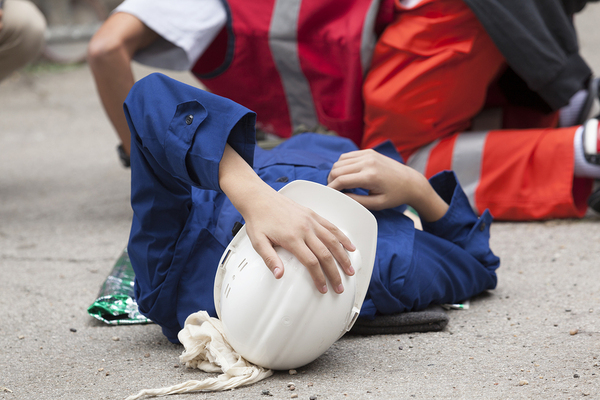
Safety First
Despite the sometimes complicated nature of OSHA, it's important to remember that contractors have the same goal: having a job site that's as safe as possible to work on. Nobody wants to see their employees go to the hospital or even suffer a relatively minor injury. OSHA simply offers a clear, logical framework for contractors to follow to ensure the health and safety of everybody on the work site.
Taking the time to properly train crews on workplace safety and listening carefully to employee concerns will often be your most powerful tools to prevent OSHA violations. Emphasizing safety is always a positive on any job site. To learn more about construction safety or your options for heavy equipment rental, contact us.
